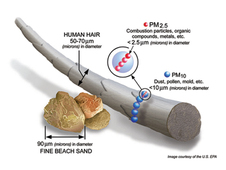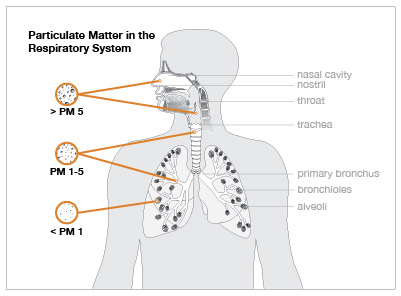
PM10 and PM2.5 particles make up a large proportion of dust that can be drawn deep into the lungs. Some particles are large or dark enough to be seen as soot or smoke. Others are so small they can be detected only with an electron microscope. Larger particles tend to be trapped in the nose, mouth or throat.
Because particles originate from a variety of mobile and stationary sources (diesel trucks, cars, woodstoves, power plants, lawn mowers, leaf blowers, volcanoes, etc.), their chemical and physical compositions vary widely.

The people who are most at risk are people with asthma, influenza, lung, heart, or cardiovascular disease, the elderly, and children.
